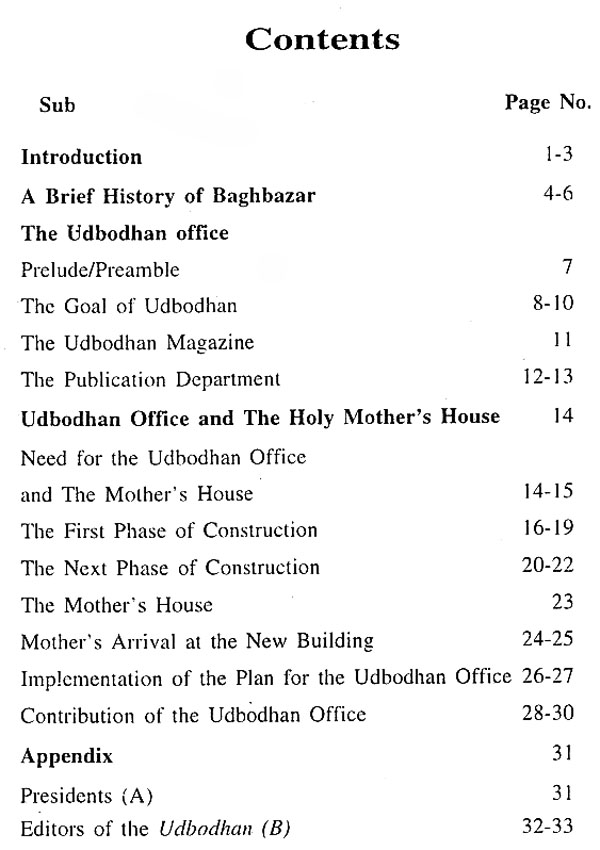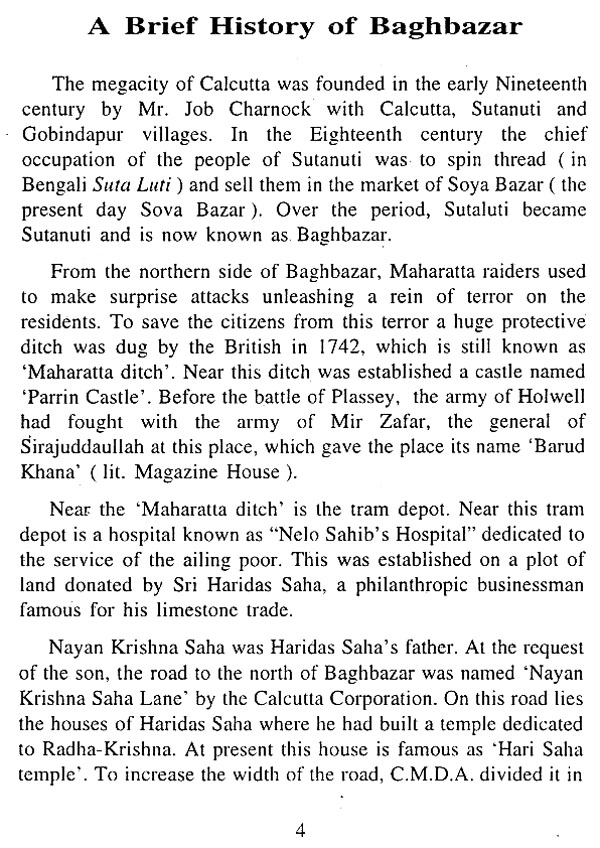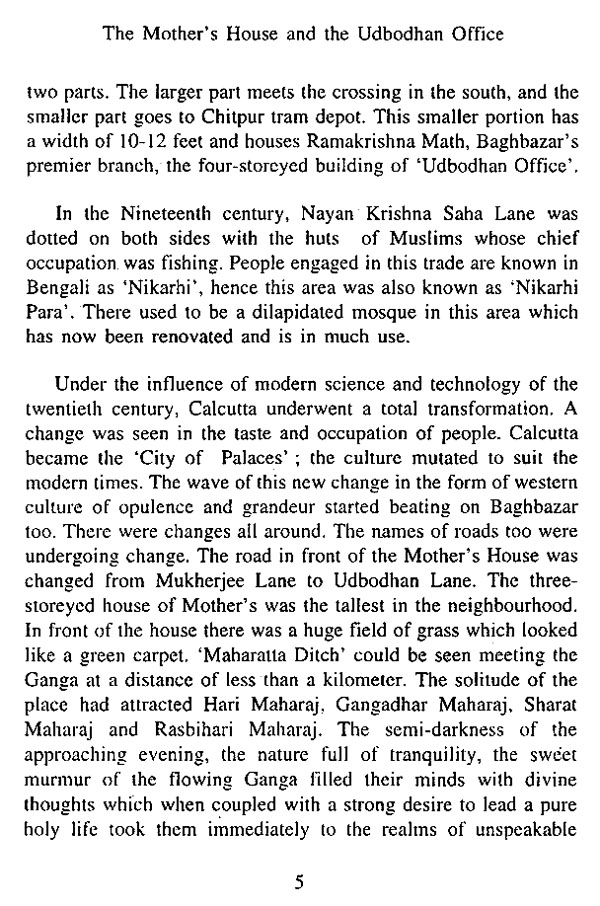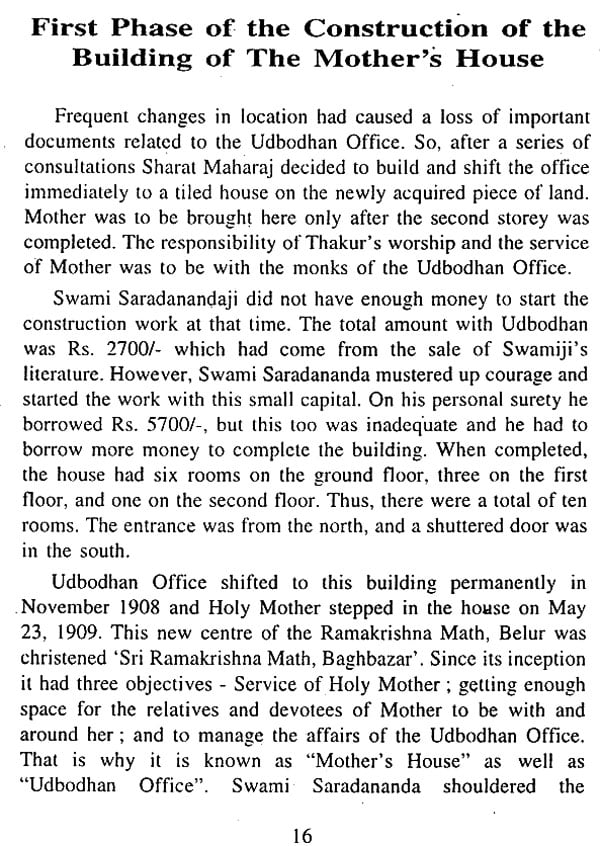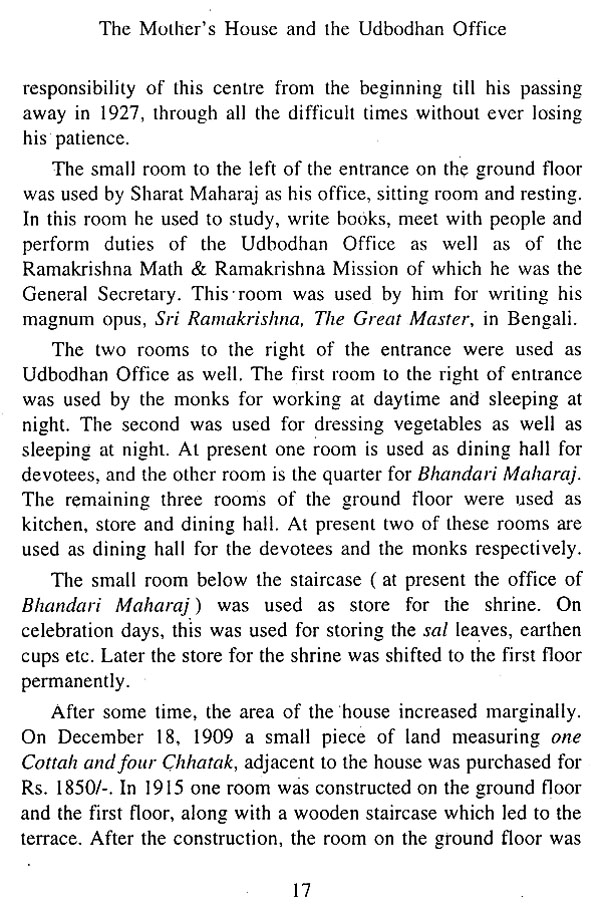
The Mother's House & The Udbodhan Office
Book Specification
| Item Code: | NAZ490 |
| Publisher: | Udbodhan Karyalaya, Kolkata |
| Language: | English |
| Edition: | 2008 |
| ISBN: | 8180404501 |
| Pages: | 40 |
| Cover: | PAPERBACK |
| Other Details | 7.00 X 5.00 inch |
| Weight | 40 gm |
Book Description
The edifice of Indian society, politics, language and practically every aspect of Indian culture has come up with religion as its basis and even after thousands of years this culture is living with its unique character. Religion is the soul of India. Whenever there has been a rejuvenation in the Indian religious life, there has been a general all-round progress ; with the decline in religious life has come the degradation. When such a spell of degeneration, which .
continued for nearly a thousand years reached its nadir in the Nineteenth century, pulling the nation towards utter destruction, there was the advent of Sri Ramakrishna. With his advent India found out a new way in religion. He ‘incarnated himself in India, ‘to demonstrate what the true religion of the Aryan race is; to show where amidst all its many divisions and offshoots, scattered over the land in the course of its immemorial history, lies the true unity of the Hindu religion, which by its overwhelming number of sects discordant to superficial] view, quarrelling constantly with each other and abounding in customs divergent in every way has constituted itself a misleading enigma for our countrymen and the butt of contempt for foreigners ; and above all, to hold up before men, for their lasting welfare, as a living embodiment of the Sanatana Dharma, his own wonderful life into which he infused the universal spirit and character of this Dharma, so long cast into oblivion by the process of time’.
Some young disciples of Sri Ramakrishna made themselves fit to accept his message by burning the impurities of their mind in the’ blazing fire of renunciation and austerity. They imbibed the message of Sri Ramakrishna and after taking the vows of Sannyasa took up the difficult task of preaching this message from door to door. The chief among these. young men was Swami Vivekananda-an ardent rationalist. He had studied both the Indian as well as the Western thoughts and analysed them minutely. Very naturally, Sri Ramakrishna chose to transmit to him the powers acquired through his own sadhana and made him the leader of this select band of young men, putting on his shoulders the responsibility of the welfare of the humanity by preaching the universal ideas in India and abroad.
After the passing away of Sri Ramakrishna, Swami Vivekananda organized these young men at Baranagar to start the organisation in the name of Sri Ramakrishna. Later, he travelled through the length and breadth of India to find out the means of alleviating the misery of the common people. During this period he realized that the root cause of all this misery lay in their straying away from true religion. By religion he, meant manifestation of divinity already latent in man as well as culture of physical strength. He repeatedly attacked the tamasik nature of people which overpowers them in the name of religion, taking them away from the pinnacle of success to the abyss of destruction. He realized that unless Indians gained back their individuality by once again imposing full faith in their age-old religion and culture, they won't succeed in imbibing the grand ideas of Sanatana Dharma, made relevant for the present age by Sri Ramakrishna. At the same time it was imperative that India accepted these ideas for its regeneration.
Swamiji spread the message for the present age by preaching Vedanta in the West in .a language that was readily understood by them. Consequently, the Western civilization, steeped in Rajas got a taste of the Sattva and a means to improving the world civilization; on the other hand, with the tremendous success of Indian religion and culture in the West, Indians got back their faith in their own tradition. After staying in the West for nearly four years, Swamiji returned to India to dedicate himself to the welfare of the country by infusing a new vigour in its national life. Even while in the West, he had kept on inspiring and guiding his brother-disciples at Calcutta and his disciples like Alasinga at Madras to dedicate themselves for the welfare of the people.
Swamiji had drawn attention to the need of publication of literature for the dissemination of the new message. He also wished to see work performed on these lines. When the lectures of Swamiji delivered in America and noted down by Goodwin were about to be published, he commented, ‘I am glad, however, that a good deal of literature has been created by taking down stenographic notes of my lectures." He further added, ‘I want to leave behind some books which would act as foundation to my work even after ] am gone.’ He also encouraged his American and English disciples who were trying to publish a magazine. From America he inspired Alasinga to publish the journal Brahimavadin. When. Swami Trigunatitananda expressed his desire to publish a Bengali journal, Swamiji kept on encouraging him through his letters.
After Swamiji’s return from the West, that desire of Swami Trigunatitananda was fulfilled with the help of Swamiji, and the Bengali monthly magazine Udbodhan was born.
**Sample Pages**
